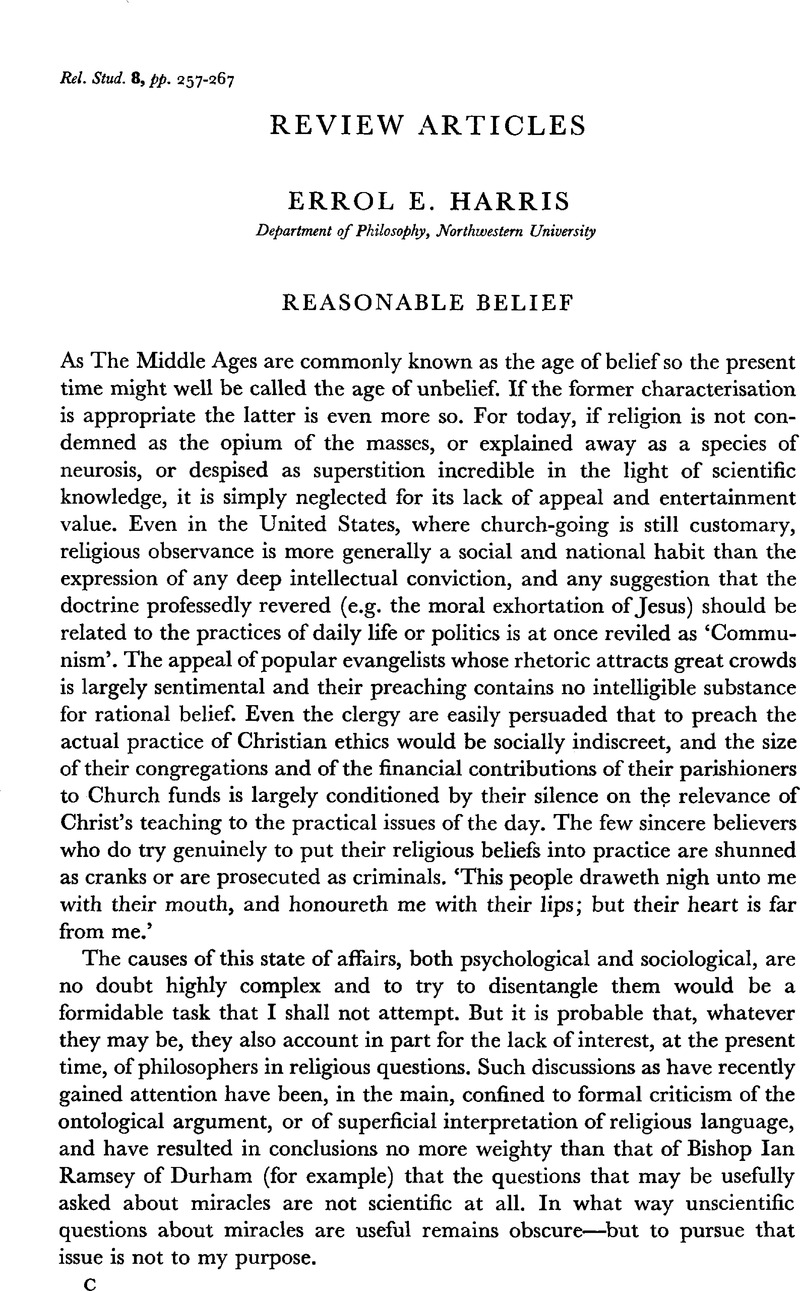No CrossRef data available.
Article contents
Reasonable Belief
Published online by Cambridge University Press: 24 October 2008
Abstract

- Type
- Review Articles
- Information
- Copyright
- Copyright © Cambridge University Press 1972
References
Page 258 note 1 A Layman's Quest, George Allen & Unwin, Ltd., London, 1969.Google Scholar
Page 258 note 2 Chs. I, 9 and 10.
Page 260 note 1 Quoted by Knox on p. 17.Google Scholar
Page 260 note 2 Ibid., p. 21.
Page 261 note 1 See Revelation through Reason (1958)Google Scholar; The Foundations of Metaphysics in Science (1965)Google Scholar; Hypothesis and Perception (1970), Allen, G. & Unwin, , London.Google Scholar
Page 261 note 2 See my article on ‘The Categorical Universal’ in the forthcoming Oxford University Press volume of Critical Essays on the Philosophy of Collingwood.Google Scholar
Page 261 note 3 See again Revelation through Reason, Ch. 3.
Page 262 note 1 In The Pilgrim's Regress.Google Scholar
Page 262 note 2 Ibid., p. 147.
Page 264 note 1 Simon the Canaanite who is listed, in Matthew x. 4, with Judas Iscariot. The view has often been put forward that Judas also was a Zealot and that he betrayed Jesus in order to force him to take vigorous action against the Romans. (‘Cananaean’. Knox points out, is Aramaic for ‘Zealot’).
Page 264 note 2 In The Presupposition of Critical History (Oxford, 1874).Google Scholar
Page 265 note 1 Hosea vi. 6.


